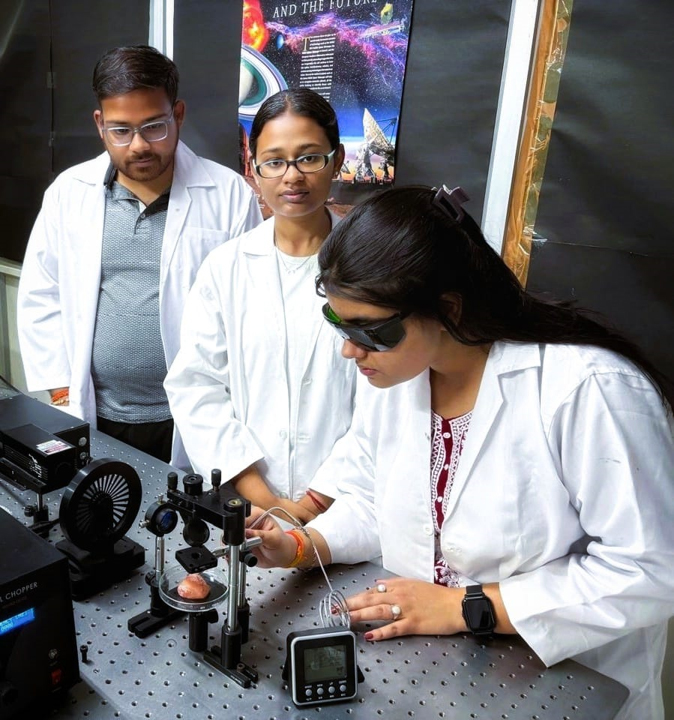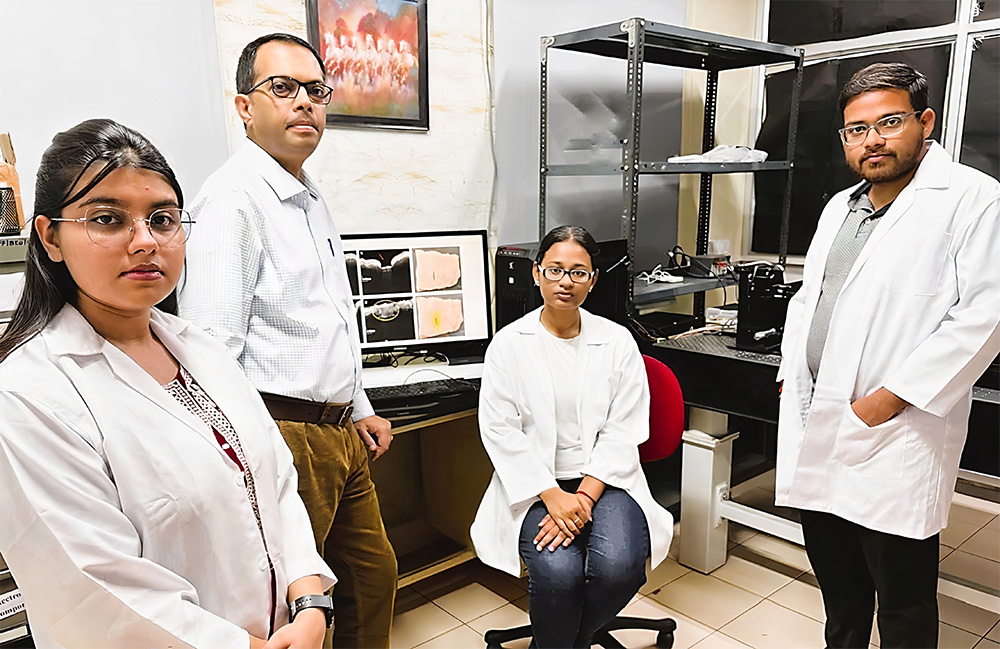Study introduces improved method of laser tissue soldering, offering a fast, strong, and clinically scalable method for suture-free wound repair.

Wausau, WI (June 16, 2025) – Laser tissue soldering (LTS) is a promising stitch-free method for wound closure, but until now, its clinical adoption has been limited by weak bonding strength and long procedure times. A new study introduces a laser-based method to seal wounds without stitches, combining proteins and synthetic materials to create stronger bonds and using nanoparticles to speed up the process. Real-time imaging ensures precise results, tested successfully on animal tissues, offering a promising alternative to traditional wound closure techniques.
The study, led by a team from Birla Institute of Technology, Mesra in Ranchi, India, is titled “Improved Ex‐Vivo Bond Quality Monitoring of Plasmonic Metal Oxide Biomaterials Mediated Laser Tissue Soldering Process Using Fast Noninvasive Optical Tomographic Imaging.” This basic science article, published in Lasers in Surgery and Medicine (LSM), the official journal of the American Society for Laser Medicine and Surgery, Inc. (ASLMS), was selected as the July 2025 Editor’s Choice.
“Traditional wound closure methods like sutures and staples often come with risks of infection, scarring, or prolonged healing. We engineered a laser-driven method using polyethylene glycol-reinforced proteins and plasmonic nanoparticles to boost tissue bond strength by up to 28% and reduce sealing time by 33%,” the team said. “Integrated real-time imaging using Optical Coherence Tomography ensures precision, offering a suture-free, rapid solution for surgeries where strength and minimal scarring are critical.”
This method combines bovine serum albumin (BSA) with polyethylene glycol (PEG) for improved mechanical strength and incorporates silver (AgNP) and titanium dioxide (TiNP) nanoparticles to accelerate the process via localized surface plasmon resonance (LSPR). Overall, the integration of PEG, plasmonic nanoparticles, and OCT-based monitoring significantly improved LTS performance, offering a fast, strong, and clinically scalable method for suture-free wound repair.
 The team from the Department of Bioengineering and Biotechnology at Birla Institute of Technology, Mesra, includes doctoral candidate Sweta Satpathy, PhD student Abhishek Banerjee, Junior Research Fellow Ishita Banerjee, and Associate Professor Dr. Raju Poddar.
The team from the Department of Bioengineering and Biotechnology at Birla Institute of Technology, Mesra, includes doctoral candidate Sweta Satpathy, PhD student Abhishek Banerjee, Junior Research Fellow Ishita Banerjee, and Associate Professor Dr. Raju Poddar.
Editor’s Choice is an exclusive article published in LSM, the official journal of ASLMS. View the complete manuscript.
The American Society for Laser Medicine and Surgery, Inc. (ASLMS) is the largest multidisciplinary professional organization dedicated to the development and application of lasers and related technology for health care applications. ASLMS promotes excellence in patient care by advancing biomedical application of lasers and other related technologies worldwide. ASLMS membership includes physicians, surgeons, nurses, and allied health professionals representing multiple specialties, physicists involved in product development, biomedical engineers, biologists, industry representatives and manufacturers. For more information, visit aslms.org.